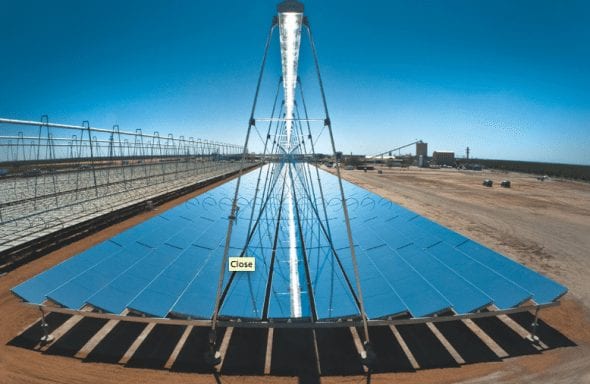Australia’s Renewable Energy Agency – the independent institution charged with giving a kick-start to emerging renewable energy technologies and supporting infrastructure – has had its overall funding cut by around 5 per cent and a further $370 million deferred to beyond 2020 as part of changes announced in the 2013 Federal Budget on Tuesday.
The cut, which effectively reduces ARENA’s total budget from $3.2 billion to just over $3 billion, comes from a decision to return $159 million of unspent money from the Education Investment Fund – a $200 million facility that was to run alongside the now defunct Solar Flagships program – to the budget.
CEO Ivor Frischknecht said he was disappointed by the budget cut – which effectively removes 10 per cent of unallocated monies, even though these particular funds were not under its direct control – but he said the “reprofiling” of the funding for other programs could actually suit ARENA’s investment objectives.
Under the changes announced by Treasurer Wayne Swan, funding for ARENA would be trimmed by $70 million in 2014/15 and by $150 million in the two subsequent years, with the money backloaded from 2020 into a program that would be extended out to 2021/22.
The move to effectively delay around 7 per cent of its unallocated funds has been criticised by clean energy supporters. The Clean Energy Council said it was disappointed the funds had been sent into the “budget ether”, just one year after ARENA had been established as an independent body to provide long-term stability to investors, and to avoid this very problem of annual budget cuts. ARENA enjoys bipartisan support, unlike the $10 billion Clean Energy Finance Corporation.
However, Frischknecht told RenewEconomy in an interview that the “reprofiling” of funding was a “sensible” move because it would help align the funding with the agency’s own investment plans.
He said it is proving hard to “move funds out the door” and, rather than looking only at allocating money for up-front grants, ARENA was now looking at giving ongoing support to some projects in the form of guaranteed tariffs – much like the plan by the ACT government in its big solar campaign, and the strategies adopted in the UK. This means those funds would be spent over the course of a project, rather than up front.
“We are starting to look at bigger projects, where we might be giving output support,” he said. “This could be in the form of contracts for difference – or as a capped feed-in tariff – the projects are paid to operate as a success rather than receiving money up front. It aligns incentives a lot better and different projects have different needs. This approach gives us more flexibility.”
Frischknecht did not specify what sort of projects this could affect, but at a guess it would likely be for large-scale solar, or similar. This has proved effective in the ACT, and potential developers such as Alinta Energy – which is looking to build a solar thermal plant in South Australia to replace all or part of its coal-fired generation at Port Augusta – have said such tariffs would be useful to “de-risk” the project and lower the cost of finance.
Much of the unallocated funding inherited from ARENA came from the defunct Solar Flagships campaign.
A handful of projects that made the final shortlist were referred to ARENA, with companies such as Infigen and Pacific Hydro re-submitting small and more modest proposals. Frischknecht said the company is still working its way through those proposals and hoped to make decisions “in the next 6 to 12 months”.
Frischknecht also revealed that ARENA next month will launch a new $400 million program that will focus on deploying renewables in off-grid and end-of-grid areas, with a particular focus on mining operations, which are facing soaring costs from having to import and sometimes truck in diesel or gas supplies.
ARENA has stated previously that it would look to target off-grid and remote areas because the costs of the fossil fuel alternatives is so high. Energy suppliers have suggested that the cost of diesel power is often well in excess of $400/MWh.
“The cost gap with renewables is small, yet renewables are not being implemented at anywhere near the rate you would expect,” Frischknecht said. “So we are looking at addressing the financial and non financial barriers.”
He said these projects would likely be sizeable investments. “We are looking for complete solutions – control systems, integration, potentially storage, and integrating renewables with existing fossil power systems.”
Frischknecht said ARENA was particularly pleased to get a $6.1 million increase in operational funding, which would allow the agency to expand, adding in project managers and specialist financing and transactional teams to look at new projects. “This is a big vote of confidence in our work,” he said.








